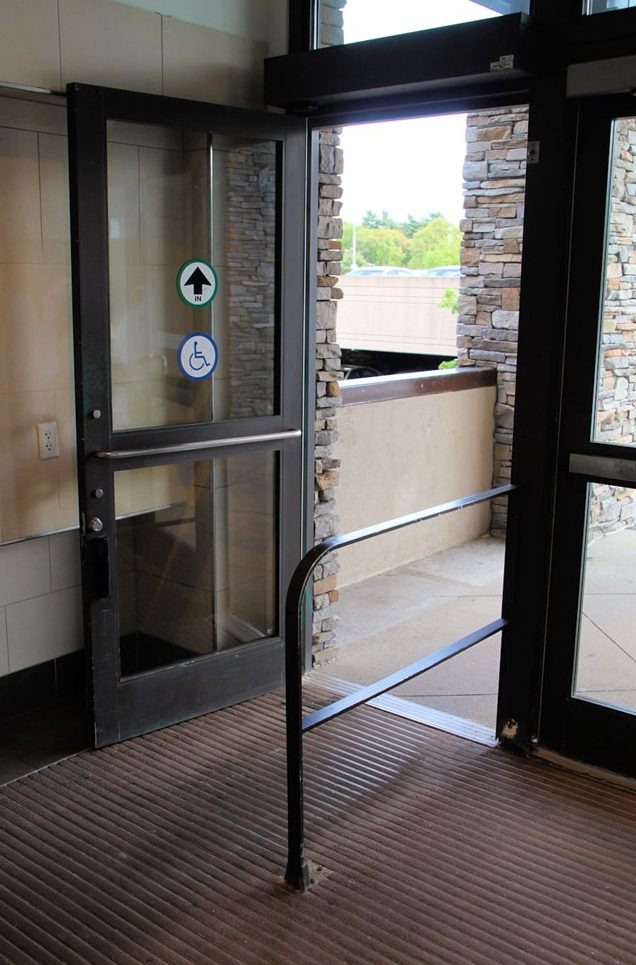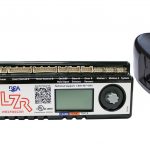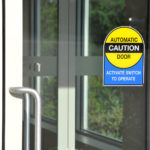 I have written about low energy automatic operators in quite a few posts, but a specific question has come up several times lately:
I have written about low energy automatic operators in quite a few posts, but a specific question has come up several times lately:
Can a low energy automatic operator that is certified to BHMA A156.19 be installed on a door that is required to comply with BHMA A156.10?
I have heard various answers to this question, so I worked with our compliance engineers and our colleague Len Pursell of Stanley Access Technologies to answer the question once and for all (I hope!).
Background (skip ahead if you already know this part):
There are two BHMA standards that address automatic operators for swinging doors:
- A156.10 is the Standard for Power Operated Pedestrian Doors
- Scope: Requirements in this Standard apply to power operated doors for pedestrian use which open automatically when approached by pedestrians and some small vehicular traffic or by a knowing act. Included are provisions to reduce the chance of user injury or entrapment. Power operated doors for industrial or trained traffic are not covered in this Standard.
- A156.19 is the Standard for Power Assist and Low Energy Power Operated Swinging Doors
- Scope: Requirements in this Standard apply only to swing door operators. The operator types are power assist, and low energy power operators, for pedestrian use, and some small vehicular use. It does not address doors, finish or hardware. The activation of all doors described in this standard requires a knowing act. Included are provisions intended to reduce the chance of user injury or entrapment. These products are intended to improve accessibility.
According to the scope of each of the standards, which I copied and pasted above, operators used in applications subject to the A156.10 standard are actuated when the door is approached (typically via a sensor), or by a knowing act such as a push button. Auto operators used in A156.19 applications must be actuated by a knowing act. There are other differences between the standards, including requirements related to opening force and speed, hold-open time, signage, and safety features.
When a low energy operator is actuated by a sensor instead of a knowing act, it has to comply with A156.10 instead of A156.19. Here’s where that is stated in A156.19:
There are many low energy automatic operators that are certified to to BHMA A156.19. You can find a list of these products in the BHMA Certified Products Directory (CPD) under A156.19. So back to the original question…if a low energy operator is actuated by a sensor instead of by a knowing act and must now comply with A156.10, can an operator that is certified to A156.19 be installed, or does the operator have to be certified to A156.10?
The Answer:
My immediate response was yes – a low-energy operator certified to A156.19 and actuated by a sensor can be installed in an application that complies with A156.10. Looking at it from a common-sense standpoint, what would be the reason NOT to allow that? I can’t think of any safety concerns, assuming that the door opening meets the requirements of the A156.10 standard.
But this paragraph in A156.10 may have been the source of confusion:
This paragraph could be interpreted to mean that an A156.19 operator could not be used in an A156.10 application, and in order to meet the A156.10 standard, an operator certified to A156.10 is required.
Here’s the kicker…the BHMA CPD does not include any automatic operators that have been certified to the A156.10 standard. A156.10 is not even listed in the drop-down menu. You can click here to see for yourself.
The A156.10 standard describes how the automatic door has to function in order to help ensure an acceptable level of safety for building occupants, addressing safety sensors, control mats, guide rails, signage, operational time, etc. But it is not a certification standard for the product itself.
So the answer is yes. A low energy automatic operator that is certified to BHMA A156.19 can be installed in an application (typically a door actuated by a sensor) that has to comply with BHMA A156.10 standard. Of course, all of the requirements of the A156.10 standard would have to be met.
Any questions?
You need to login or register to bookmark/favorite this content.










Leave A Comment